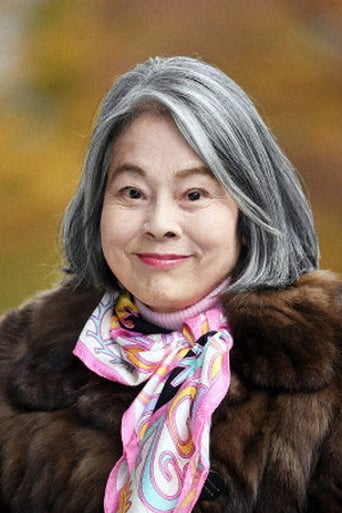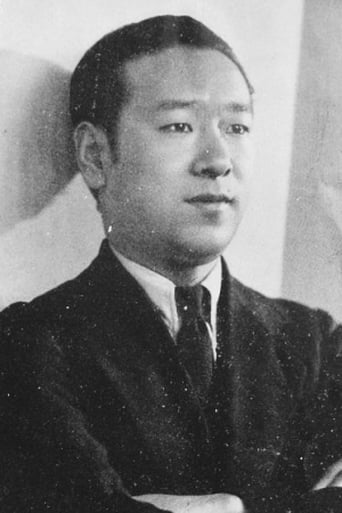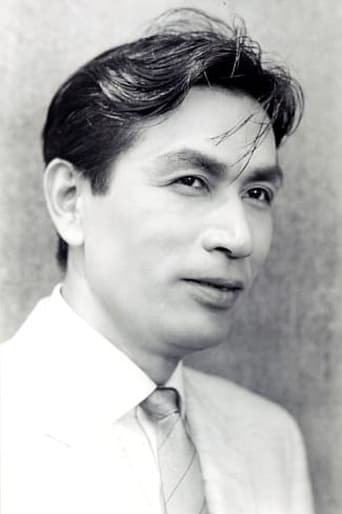PodBill
Just what I expected
ShangLuda
Admirable film.
Invaderbank
The film creates a perfect balance between action and depth of basic needs, in the midst of an infertile atmosphere.
Lachlan Coulson
This is a gorgeous movie made by a gorgeous spirit.
christopher-underwood
Rampaging yakuza of the juvenile type, bad losers at mahjong, lots of screaming, running about and overacting. Sound familiar? I'm afraid so and it was only about halfway through I realised this was probably intended as a comedy. To be fair to director Shohei Imamura this is a 1961 film and was at the forefront of the Japanese 'New Wave'. Prior to this, running and jumping about film, most of Japanese cinema had been much more mannered, serene and dedicated to promoting the beauty and art of the Japanese way of life. Here at least an angry man is putting his foot down and having a go at the US occupation forces and their parasitic brethren, the aforementioned, yakuza. Not an easy watch, not least because everyone (excepting one) is horrible, and the comedic moments are just not funny any more, even if they seemed so to a far eastern cinemagoer almost 60 years ago.
DICK STEEL
Shohei Imamura films continue to be showcased in the Japanese Film Festival, and Hogs and Warships is a tale of pimps, gangsters and prostitutes put together in a melting pot that is the streets of Yokosuka, a port town where US Navy personnel spend their R&R in postwar Japan. And I suppose you know that means painting the town red with drink and women, with the Japanese folk all eager to make a quick buck through the provision of services. I think there is no love shown here in painting, through the course of the film, how the pigs can refer to both the American soldiers - where the rowdy rank and file chasing skirts to bed, and the officers portrayed as more than willing to keep mistresses - and the Japanese men themselves who are pimping their town/city/country, where everyone's thinking of making good money in the shortest possible time. As an outcome, there's a whole load of black comedy that Imamura crafts in the film, where gangsters are constantly scheming and looking to outwit rivals, and the women well, relegated to either the backlanes waiting for pimps to bring in business, or pandering to the notion of being a kept woman for a better life overseas.Hogs and Warships, or Pigs and Battleships, begins with showing the bleak picture of the impoverished in Yokosuka out to make a living through all means possible, despite the clamp down on bars and establishments by the Shore Patrol, that seems more symbolic and hence hypocritical in nature even, where a prostitute lashes out at a SP personnel for visiting her brothel just before the closure. After a quick introduction we're introduced to the protagonists in the lovebird couple Kinta (Hiroyuki Nagato) and Haruko (Jitsuko Yoshimura, who followed up this film with Onibaba, also featured in last year's JFF), one on each side of the sexes to touch on their respective strategies to better their lives.Kinta's the quintessential easy-going, happy go lucky and unlikely gangster, where he thinks the money is with running with the gangsters, although he soon finds out his recruitment besides helping to operate the black market hog business, is to become the fall guy for practically everything that goes wrong for the gang, from the comical disposal of a corpse, to taking the rap for the gangster chief should it come down to that. With that comes the promise of riches beyond his imagination, with which he can pursue his dream of becoming a band manager.Haruko is that steely lady that we've come accustomed to with Imamura's characterization of the fairer sex. Like the other romantic leading ladies in films like A Flame at the Pier and Good for Nothing, they possess this inexplicable hope that they are able to change their man through love. Here, Haruko persuades quite unsuccessfully for Kinta to give up his life of crime, wanting him to work in a factory, which to Kinta is a dead end job. The story of Haruko serves to be more interesting than the rest, especially through Jitsuko Yoshimura's performance where in the finale you can feel her resolve jumping right out of the screen in her determination to create a new life away from the old one where mistakes have been made and old hopes shattered.It's the life and times of the working class during the era, and comes with a scene that's much talked about when all hell breaks loose on the streets of Yokosuka, where everything, including hundreds of pigs, comes together for that literal big bang finale complete with action, comedy and that tinge of poignancy even. With cinematography at its inventive best (the continuous spin from an eye in the sky angle when Haruko finds herself trapped in trouble was totally unexpected and made quite an impact on the passage of time), I found myself more interested with how the pachinko machine was manually operated at the backend by a number of hostesses working to feed those ball bearings into the player's machines!
Meganeguard
Because I am now currently working on an essay concerning Japanese New Wave cinema, I have been delving into a number of films directed by the likes of Oshima Nagisa, Wakamatsu Koji, and Masumura Yasuzo as well as films by the French directors Jean-Luc Godard and Jean-Pierre Melville whose own films in France's New Wave movement paralleled that of the Japanese movement resulting in influences crossing between the filmic world of the two countries. Oshima is normally the standard bearer for the Japanese New Wave movement after the release of his debut film Streets of Love and Hope (1959) and his work throughout the sixties would have a powerful intellectual leftist bent confronting such issues as discrimination, poverty, and disgust with Stalinist influenced violence. On the other end of the spectrum Wakamatsu Koji would be written off by many critics because of his primary involvement in pink films, including such disturbing works as The Embryo Hunts in Secret (1968) and Go Go Second Time Virgin (1969). Masumura's works would often straddle between intellectual leftist cinema and pink films, but such films as Kisses (1957) would open the doors for new directors trying to escape from the filmic ideals of Kurosawa, Mizoguchi, and Kobayashi.Amongst these New Wave directors was the figure of Imamura Shohei. Comparing himself to Oshima Nagisa it is reported that Imamura said, "I'm a country farmer; Oshima Nagisa is a samurai." While this quote can be read on many different levels, one way it can be interpreted is that Imamura's films tend to be more earthy than Oshima's and while still threaded throughout with intelligence they are not quite as highbrow as some of Oshima's films, i.e. Death By Hanging (1968), Diary of a Shinjuku Thief (1968), and The Man Who Left His Will on Film (1970). Supporting this earthly quality of his films, Imamura has stated that his films generally deal with the lower extremities of the body rather than the upper extremities.Hogs and Warships concerns the daily life of Kinta, a smalltime gangster in Yokosuka who spends most of his time hustling American sailors and taking them to the local brothels. In fact, the world of Kinta and those around him are completely linked with the naval base, because the American sailors are who bring the money into the squalid town. When not acting as a gopher for his superiors, Kinta spends his time lounging around or seeing his eighteen-year old girlfriend Haruko. Haruko, much more practical minded than her boyfriend, wants Kinta to give up his life as a gangster and become a factory worker with her uncle in Kawasaki. However, Kinta is completely against the idea because he does not want to end up like a wage-slave like his father who was dumped by his company after he got sick. Therefore, he wants to make money instead through being a band leader or a pimp instead of living a complete hand-to-mouth existence as a factory worker.Kinta believes that he has received a good opportunity to improve his and Haruko's standard in life when his boss appoints him as chief of a piggery. However, there are several complications because of the difficulties receiving scraps to feed the pigs and this leads to a number of problems for Kinta and Haruko.While on first glance, Hogs and Warships might seem to be typical yakuza film fare, it is fact laced with a strong social commentary on Japan's reliance on America and its "support" of America's further military actions within Asia, especially the Korean War. While there are indeed some quite comic moments in the film, there are also some brutal ones as well such as when a drunken Haruko has her run in with three sailors. While not always a pleasant viewing, Hogs and Warships is a must for those who are interested in the films of Imamura Shohei or Japanese New Wave cinema as a whole.
sharptongue
Teen hoodlum Kinta is excited to be given the plum job of supervising the pig pen at the local US base, for which he'll be responsible diverting the food scraps to the black market, and scoring a good income for his yakuza gang. His girlfriend Hiroku earnestly hopes he'll leave the yakuza and get an honest job, but neither is she a paragon of virtue - she is drawn into prostitution and petty thievery. The story mostly follows their troubled relationship, against a backdrop steeped in corruption, which results from the clash of US Forces occupation against the poverty and aspirations of the people of post-war Japan.A scathing, even cynical critique. There is no tenderness at all here. Even the young lovers embracing is shown more as a desperate clinging than emotional attachment. And corruption is everywhere - there are no good guys. Confronting stuff, well-photographed, memorable as a vivid nightmare.




